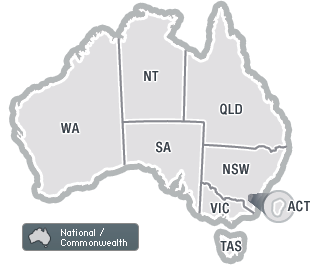The most highly-developed safety systems and plans will still fail if employers don't get the "people" component of their approach right, a safety professional says.
Head of safety for Pacific Brands, Loren Murray – who is presenting an upcoming webinar for OHS Alert subscribers – says health and safety plans should reflect each work group's culture and needs.
If workers' specific needs are met, they will be more engaged and take more ownership over safety, she says.
Creating plans, Murray says, is just one of the following four pillars that underpin workplace safety at Pacific Brands: "our way" (architecture), "our system", "our plan" and "our people".
Architecture
Safety professionals are "architects" whose objectives are to help their employers set safety goals and determine how they can achieve them, Murray says.
The over-arching safety program should "inspire, excite and create a passionate single-minded safety workforce", she says.
Safety professionals must consult workers on their safety concerns and aims to ensure the architecture reflects the workplace culture and workers' needs, or it won't be accepted or effective.
Systems
It is vital that an employer's safety system reflects or complements its safety goals and architecture, Murray says.
The system should align to the needs of workers in the business, rather than the workers aligning to it.
Plans
At the planning phase, employers must avoid developing just one health and safety plan and "pushing it over everyone", as this will often "miss the mark", Murray says.
Most employers have different business units or operating groups, such as administration, marketing and supply chain, and it's "dangerous" to assume these units are culturally the same, she says.
Each work group should be encouraged to create its own health and safety plan that reflects its particular hazards, risks and work culture.
If workers' needs are met, they will be more engaged and take ownership of safety, Murray says.
"If our architecture and our system has worked, it's because [work groups] have their own plans, their own skin in the game and they're interacting with it their way.
"Nothing makes an architect more happy than when he sees the public interacting with his building-sized sculpture in a way that meets their needs. It just means that it's worked."
People
Finally, employers should interact with workers compassionately and make them feel like they belong, to ensure everything works, Murray says.
"We've dealt with 'our way', which is really the corporate vision; we've created the architecture; our system supports it, our plans support it, but they're quite mechanistic," she says.
"The human piece is: how do you make your architecture welcoming to your people so they want to interact with it, they choose it, it's their free will?"
For Pacific Brands, this involved establishing "peer groups" of workers who were given significant control over aspects of workplace safety (see related article).
Employers should also consider the demographics of work groups when engaging workers in health and safety, Murray says.
What engages workers under 25 is different to what engages a work group with workers in their 50s, she says.
"Just be creative, be innovative. If you're doing something the same way over and over again it's probably not going to work.
"Align whatever engagement program you create to what your people want, not what you think they want."
In OHS Alert's free subscriber webinar on "building employee accountability for safety" on Thursday, 11 December, Murray will cover:
- what accountability for safety looks like in practice;
- the steps to creating accountability in employees;
- the "shop-keeper" approach to engagement; and
- results and lessons from making employees responsible for safety.
The webinar will include time for live Q&A.
Click here for more information or to register (paid subscribers only).



